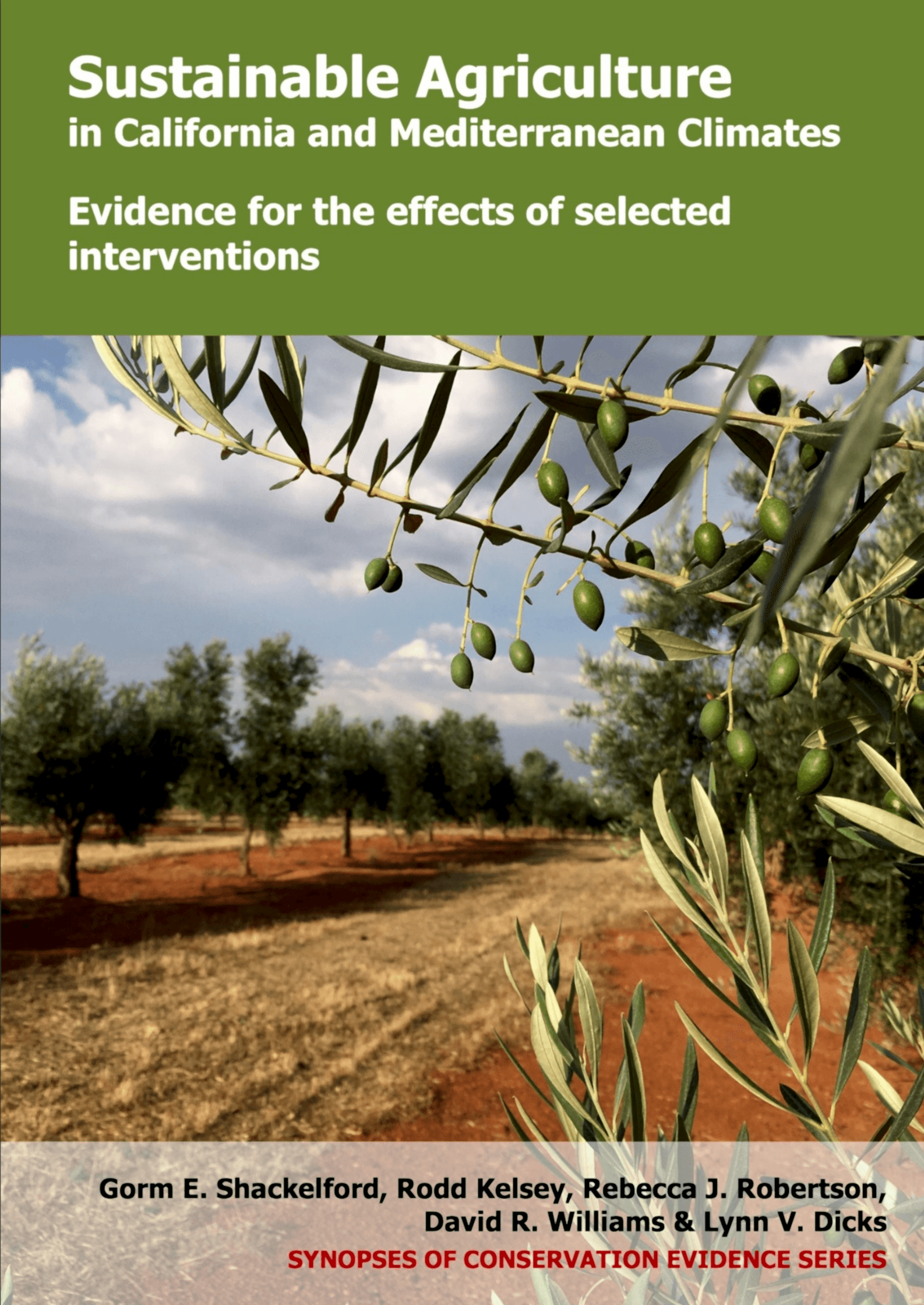Actions to conserve biodiversity
We have summarised evidence from the scientific literature about the effects of actions to conserve wildlife and ecosystems.
Review the evidence from the studies
Not sure what Actions are? Read a brief description.
75 Actions found
Refine
Hide
75 Actions found
Download Actions
Order results by:
| Action | Effectiveness | Studies | Category | |
|---|---|---|---|---|
Soil: Add manure to the soil Action Link | Likely to be beneficial | 11 | ||
Crop production: Use organic fertilizer instead of inorganic Action Link | Trade-off between benefit and harms | 11 | ||
Water: Use organic fertilizer instead of inorganic Action Link | Unknown effectiveness (limited evidence) | 11 | ||
Water: Use no tillage instead of reduced tillage Action Link | Likely to be beneficial | 10 | ||
Pest regulation: Use reduced tillage in arable fields Action Link | Likely to be ineffective or harmful | 10 | ||
Crop production: Use crop rotations Action Link | Likely to be beneficial | 9 | ||
Crop production: Add compost to the soil Action Link | Likely to be beneficial | 8 | ||
Pest regulation: Use no tillage instead of reduced tillage Action Link | Trade-off between benefit and harms | 8 | ||
Pest regulation: Plant flowers Action Link | Trade-off between benefit and harms | 8 | ||
Pollination: Plant flowers Action Link | Likely to be beneficial | 8 | ||
Pollination: Plant hedgerows Action Link | Beneficial | 8 | ||
Other biodiversity: Use seasonal grazing Action Link | Unknown effectiveness (limited evidence) | 8 | ||
Water: Add slurry to the soil Action Link | Likely to be ineffective or harmful | 7 | ||
Crop production: Add slurry to the soil Action Link | Beneficial | 6 | ||
Soil: Add sewage sludge to the soil Action Link | Unknown effectiveness (limited evidence) | 6 | ||
Soil: Exclude grazers Action Link | Unknown effectiveness (limited evidence) | 6 | ||
Water: Add compost to the soil Action Link | Unknown effectiveness (limited evidence) | 6 | ||
Water: Exclude grazers Action Link | Unknown effectiveness (limited evidence) | 6 | ||
Water: Add manure to the soil Action Link | Unknown effectiveness (limited evidence) | 5 | ||
Water: Plant buffer strips Action Link | Unknown effectiveness (limited evidence) | 5 | ||
Other biodiversity: Add compost to the soil Action Link | Likely to be beneficial | 5 | ||
Water: Use crop rotations Action Link | Unknown effectiveness (limited evidence) | 4 | ||
Crop production: Plant flowers Action Link | Unknown effectiveness (limited evidence) | 3 | ||
Water: Add sewage sludge to the soil Action Link | Unknown effectiveness (limited evidence) | 3 | ||
Pest regulation: Add compost to the soil Action Link | Unknown effectiveness (limited evidence) | 3 |
Download Actions

Mediterranean Farmland - Published 2017
Mediterranean Farmland synopsis
Watch this search
If you are familiar with RSS feeds, please click the button below to retrieve the feed URL:
RSS feed for this searchIf you are unfamiliar with RSS feeds, we would suggest reading this BBC article.
Unfortunately, due to the number of feeds we have available, we cannot provide e-mail updates. However, you could use tools such as Feed My Inbox to do this for you.
What are 'Individual studies' and 'Actions'?
Individual studies
An individual study is a summary of a specific scientific study, usually taken from a scientific journal, but also from other resources such as reports. It tells you the background context, the action(s) taken and their consequences.
If you want more detail please look at the original reference.
Actions
Each action page focuses on a particular action you could take to benefit wildlife or ecosystems.
It contains brief (150-200 word) descriptions of relevant studies (context, action(s) taken and their consequences) and one or more key messages.
Key messages show the extent and main conclusions of the available evidence. Using links within key messages, you can look at the paragraphs describing each study to get more detail. Each paragraph allows you to assess the quality of the evidence and how relevant it is to your situation.
Where we found no evidence, we have been unable to assess whether or not an intervention is effective or has any harmful impacts.




















